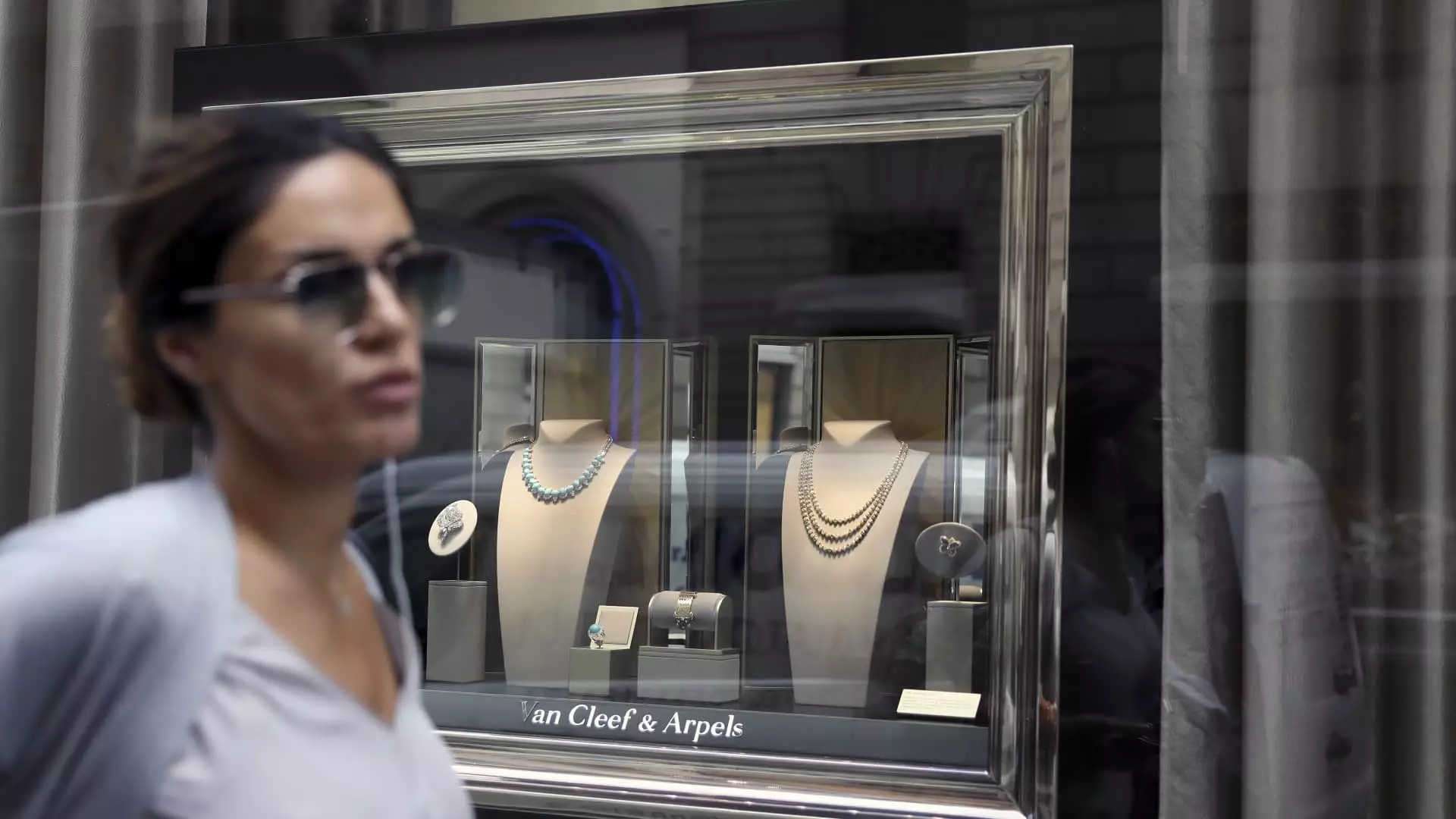In a world where economic uncertainty reigns, the super-rich cling to their opulent baubles with a ferocity that is both astonishing and alarming. While luxury retailers whisper tales of reduced consumer enthusiasm, the elite parade their gem-studded splendors as though immunity to financial crises were a fundamental human right. Diamond-encrusted rings and rare gemstone necklaces are not merely adornments but symbols of status that continue to sparkle even in the shadows of a faltering market. Yet, amidst this luxurious charade, the stark reality of economic fluctuations looms large, casting a shadow over the jubilant celebrations of the ultra-wealthy.
As demand among broader luxury shoppers wavers, the insatiable appetite of the affluent for exclusivity seems to sharpen. Suddenly, one bracelet made of mother-of-pearl is far less significant than another when the discerning eye scrutinizes authenticity and prestige. The luxury jewelry market finds mecca in the hands of the Swiss luxury group Richemont, revered for its illustrious brands such as Cartier and Van Cleef & Arpels. Luca Solca from Bernstein proclaims their jewelry offerings to be “at the top of consumer desirability” as though the fate of the entire luxury sector hangs in the balance of these shimmering pieces.
Richemont Shines Amidst a Dimming Landscape
It’s no happy accident that Richemont’s fiscal reports boast remarkably positive news, marked by an 11% growth in its Jewelry Maisons division. Against the backdrop of a marketplace largely suffering from stagnation, Richemont stands resilient, luring discerning buyers into its sparkling abyss while other luxury giants like LVMH and Kering grapple with declining sales. The juxtaposition unveils a troubling narrative: as the buying frenzy for fine jewelry flourishes, broader trends within the luxury sector indicate a cooling of consumer desire—a dichotomy begging for scrutiny.
While Richemont feasts on the vibrant allure of its jewelry brands, the harsher truth emerges when focusing on its watch division, where sales plummeted by 13% in 2024. The glaring disparity between success in jewelry and failure in watches brings forth questions about sustainability and market volatility. Are the iconic Swiss watches—often seen as lifetime investments—starting to lose their luster in an era where consumers opted for lavish purchases during lockdowns? The omnipresent question lingers: how long can the watch segment afford to be on the backfoot without jeopardizing Richemont’s overall performance?
The Heavy Weight of Economic Challenges
With the triumph of one segment often correlated with the sorrow of another, analysts caution against overconfidence in Richemont’s jewelry dominance. The luxury sector inherently grapples with external pressures that threaten its stature. Factors such as the surging Swiss franc against the US dollar and rising gold prices raise alarm bells, threatening to erode profit margins and undermine the very essence of luxury retailing. Higher costs of materials combined with the looming potential for tariffs instigate uncertainties even as the allure of precious gems seems irresistible.
Amidst this whirlwind of market forces, there emerges a pivotal narrative: the paradigm shift in consumer preferences from classic luxury goods to jewelry that embodies both emotional value and positive economic perception. There lies a burgeoning market for jewelry that is not just a symbol of wealth but a testament to personal identity and sentiment. If traditional watchmakers need to reassess their roles in an increasingly volatile market, they must adapt their strategies swiftly or risk fading into obscurity.
Shifting Paradigms in Luxury Consumption
The evolving landscape of consumer behavior raises poignant questions: Can jewelry sustain its growth when juxtaposed against the stagnation of traditional luxury goods? What happens when the distinction between fine jewelry and fashion accessories blurs? The weight of these queries highlights a crucial point—the incessant desire for jewelry may signal a broader cultural transformation in how value is measured. Crafted adornments surpass mere accessories; they are tangible markers of success that resonate with deep-rooted aspirations.
As we watch the luxurious world evolve, the monopoly of brands and their ability to keep pace with shifting consumer motives will determine the zenith of their market power. With Richemont among the leaders, it must navigate a complex landscape of both challenges and opportunities, continually adapting to consumer desires while holding true to the craftsmanship that defines its legacy.
In this complicated tapestry of affluence, the heady perfume of success can only be sustained if seasoned brands embrace innovation and authenticity in the face of twinkling turmoil. The glimmer of luxury jewelry shines brightly; however, its viability in the face of economic adversity enkindles a debate worth delving into in this unwritten chapter of consumerism’s grand narrative.

Leave a Reply